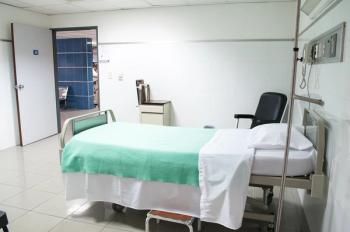
From Pathogen to Infectious Disease Diagnosis: Test Determines Between Bacterial and Viral Infections in 15 Minutes
MeMed CEO Eran Eden, PhD, discusses the MeMed BV test and how it can help make the distinction between the types of infections, aid in patient management, and reduce antimicrobial resistance.
One of the ongoing treatment challenges for providers is the ability to determine whether infections are bacterial or viral. Their presentation can be similar, and traditional testing can be time-consuming. Of course, clinicians want to be sure patients are receiving some type of intervention, so broad-spectrum antibiotics can often be prescribed in these cases.
“It [the MeMed BV test] tries to solve the following seemingly simple problem: A patient, a kid or adult, comes to urgent care or to an ED [emergency department] with a suspected acute infection. Broadly, we're trying to discern the etiologies of a bacterial or viral infection. Do we treat or not treat with antibiotics?” said MeMed's cofounder and CEO, Eran Eden, PhD.
Eden’s company developed a novel assay, the MeMed BV test, that can distinguish between bacterial and viral infections in 15 minutes. The test received a US Food and Drug Administration 510(k) clearance in 2023 and also has the European CE mark.1
Eden says the test itself is a blood test that measures 3 proteins and integrates them into a score. “They are measured and then computationally integrated into a score between 0 and 100; the higher the score, the higher the likelihood of a bacterial infection.”
MeMed shared results of 3 studies of the MeMed BV test, which demonstrated the following:
- 63% reduction in unnecessary antibiotic prescriptions (real-world study of 3920 patients)
- 70% of previously missed bacterial infections correctly identified, leading to significantly fewer hospitalizations (7.8% vs 30.3%)
- Outperformance of standard biomarkers such as procalcitonin in distinguishing bacterial vs viral infections
- Lower health care costs, especially in managing community-acquired pneumonia2
Eden mentions the multiple challenges of pathogen testing. “The first is that even if you use a multiplex PCR [polymerase chain reaction], you're only going to put your hands on a microorganism in 30 to 40% of the cases; [in] 60% of the cases, there is no microorganism, and you still have to treat, so that's one gap we're trying to solve,” Eden said. “The second thing is inaccessible infections. So you can apply, say, a SARS-CoV-2 or strep [Streptococcus] test in cases of pharyngitis. But what about otitis, bronchitis, and pneumonia? The immune system circulates throughout the entire body, so it allows you to identify these infections or the source of infection in these inaccessible infection sites. Third is the issue of colonization. So let's say you identify a virus or bacteria. Some of them have very high prevalence, especially in kids, so mere detection does not apply causality, which is confusing, leading to overuse and underuse of antibiotics. Another element here is the element of superinfections. So you identify an influenza. There's about 10% to 20% probability of bacterial superinfection on top of that. So all these elements and obviously time—you want to get results fast—it's taking this simple problem and making it really hard to discern in real time.”
He says these factors lead to uncertainty about the nature of the infection and that they are trying to reduce that with the use of this newer generation of screening tools. He says screening can greatly aid in antibiotic stewardship and address the global issue of antimicrobial resistance.
“When you talk about reduction of overuse, I would like to maybe broaden the discussion to say it's both…depending on the overprescribed or nonbacterial infection for which it does not provide any benefit,” Eden said. “But there's also an element of underuse where you should prescribe and you're not prescribing…. The BV test has started to show utility in reducing this uncertainty, reducing overuse of antibiotics but at the same time doing it in a safe manner [and] also reducing cases where there are missed bacterial infections.”
References
1. MeMed BV test demonstrates antibiotic overuse reduction in first US interventional trial. News release. MeMed. September 30, 2024. Accessed September 30, 2024. https://www.prnewswire.com/news-releases/memed-bv-test-demonstrates-antibiotic-overuse-reduction-in-first-us-interventional-trial-302260001.html
2. MeMed BV proven to optimize antibiotic use, outperform standard care, and cut costs in new studies. News release. MeMed. February 27, 2025. Accessed April 11, 2025.
https://www.me-med.com/press_release/memed-bv-proven-to-optimize-antibiotic-use-outperform-standard-care-and-cut-costs-in-new-studies/
Newsletter
Stay ahead of emerging infectious disease threats with expert insights and breaking research. Subscribe now to get updates delivered straight to your inbox.


























































































































































































































































































